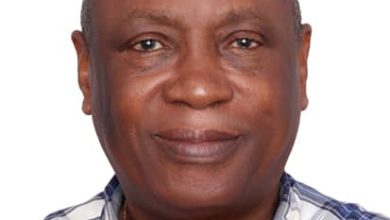Nigeria expected to expand 2.38% in Q4; Fed meeting in focus
A sense of confidence restored over the Nigerian economy this week.
This comes after the Central Bank of Nigeria (CBN) governor stated
that economic growth could expand 2.38% during the final quarter of
2019.
It has been a rough and rocky year for the global economy due to trade
uncertainty and geopolitical risk factors weighing heavily on investor
sentiment. However, Nigeria has displayed some resilience against
external and domestic risks with economic growth expanding 2.28%
during the third quarter of 2019 compared to the 1.94% seen in Q2.
Although the CBN has refrained by cutting interest rates from 13.5%,
other methods have been enforced to stimulate economic growth. The CBN
is reportedly proposing to increase the country’s loan to deposit
ratio for banks to 70% from 65%. Making sure money is in circulation,
instead of being tied up in government bonds, is a sound way to keep
the economy on the road to recovery. However, it will be interesting
to see whether this will be enough to stimulate economic growth.
Markets tepid ahead of Fed interest rate decision
Asian markets were subdued on Wednesday morning as investors grew
increasingly anxious over the lack of update on US-China trade talks.
Repeated mixed signals and messages ahead of the December 15 tariff
deadline is fostering confusion across financial markets. This
sentiment continues to be reflected in global equities as markets
adopt a ‘wait and see’ approach until clarity and direction are
offered on the trade front. In Europe, shares are expected to make a
cautious start ahead of the U.S Federal Reserve’s final interest rate
decision of 2019. Given how uncertainty remains a dominant theme this
week, safe-haven assets like Gold and the Japanese Yen have the
potential to appreciate as investors head for safety.
Steady dollar ahead of Fed meeting
The Federal Reserve is widely expected to leave interest rates
unchanged at 1.75% in December.
However, much of the focus will be directed towards the policy
statement, economic projections, dot plot and press conference for
clues on future monetary policy. Speculation around the Federal
Reserve cutting interest rates anytime soon have been quelled by
November’s blockbuster US jobs report. Although markets are pricing in
a 54% probability of a rate cut by September 2020, it will be
interesting to see whether the dot plot mirrors market expectations.
Appetite towards the Dollar will also be influenced by Fed Chairman
Jerome Powell’s remarks on the US economy and monetary policy. Should
the press conference and policy statement adopt a dovish tone, the
Dollar Index may dip back towards 97.40.
Pound dips on UK poll projections
Sterling’s depreciation against the Dollar on Wednesday continues to
highlight how the currency remains extremely sensitive to polls.
Appetite towards the Pound was dealt a blow heavy after a poll showed
a narrowing lead for Prime Minister Boris Johnson’s Conservative
Party. Given how the general election is around the corner, the
British Pound is set to remain volatile and highly reactive to polls.
Focusing on the technical picture, the GBPUSD is struggling to defend
1.3100 on the daily charts. A solid breakdown below this point should
encourage a decline towards 1.3000 in the short to medium term.
Commodity spotlight – Gold
Gold is grinding higher amid caution ahead of a looming tariff
deadline on December 15th. The precious has gained roughly 0.25% since
the start of the week thanks to investors adopting a guarded approach.
The sense of uncertainty is likely to continue supporting appetite for
safe-haven assets for the rest of this week.
Gold is seen swinging within a range in the near term ahead of the
tariff deadline. Prices are seen testing $1470 amid the market
caution, with further uncertainty injecting bulls with enough
confidence to attack $1476.50 and $1480, respectively. Given how the
precious metal remains highly sensitive to trade headlines, any good
this week could result in a decline back below $1458.





